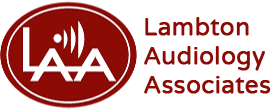
Diagnosing hearing loss by yourself is virtually impossible. For example, you can’t actually put your ear next to a speaker and effectively evaluate what you hear. That means that if you want to understand what’s happening with your hearing, you need to take a test.
Now, before you begin sweating or anxiously fidgeting, it’s important to mention that most hearing tests are rather easy and require nothing more difficult than putting on a pair of fancy headphones.
Okay, tests aren’t everyone’s favorite thing to do. Whether you’re a student or middle-aged medical patient, tests are really just no fun. You will be more relaxed and more prepared if you take some time to get to know these tests. There’s almost no test easier to take than a hearing test!
How is a hearing test performed?
We often talk about scheduling an appointment with a hearing specialist to have your hearing assessed. And the phrase “hearing test” is something we’ve probably talked about occasionally. Maybe, you’ve heard that there are two kinds of hearing tests and you’re wondering what they are all about.
Well, that’s not exactly accurate. Because you may undergo a few different kinds of hearing tests, as it turns out. Each one is made to measure something different or provide you with a specific result. The hearing tests you’re most likely to encounter include the following:
- Pure-tone audiometry: Most people are most likely familiar with this hearing test. You wear some headphones and you listen for a tone. Hear a pitch in your right ear? Put up your right hand. Hear the tone in your left ear? Same thing! With this, we can determine which wavelengths and volumes of sound you can hear. It will also measure whether you have more significant hearing loss in one ear than the other.
- Speech audiometry: Sometimes, you’re able to hear tones very well, but hearing speech is still something of a challenge. That’s because speech is generally more complex! This test also consists of a set of headphones in a quiet room. You will listen to speech at different volumes to determine the lowest level you can hear words and clearly understand them.
- Speech and Noise-in-Words Tests: Obviously, conversations in the real world occur in settings where there are other sounds. The only actual difference between this test and the Speech audiometry test is that it is performed in a noisy setting. This can help you determine how well your hearing is working in real-world situations.
- Bone conduction testing: How well your inner ear is working will be determined by this test. A small sensor is placed near your cochlea and another is placed on your forehead. A small device then receives sounds. How effectively sound vibrations travel through the ear is tracked by this test. If this test determines that sound is traveling through your ear effectively it could indicate that you have an obstruction.
- Tympanometry: Occasionally, we’ll want to check the general health of your eardrum. Tympanometry is a test that is used for this purpose. During this test, a little device will gently push air into your ear and measure just how much your eardrum moves. If you have fluid behind your eardrum, or a hole in your eardrum, this is the test that will detect that.
- Acoustic Reflex Measures: During this test, a tiny device delivers sound to your ear and observes the muscle response of your inner ear. It all occurs by reflex, which means that your muscle movements can reveal a lot about how well your middle ear is functioning.
- Auditory Brainstem Response (ABR): An ABR test attempts to measure how well the brain and inner ear are responding to sound. This is accomplished by putting a couple of tactically placed electrodes on the outside of your skull. Don’t worry, though! This test is totally painless. That’s why everyone from newborns to grandparents get this test.
- Otoacoustic Emissions (OAE) Testing: This diagnostic is designed to determine how well your cochlea and inner ear are working. It does this by measuring the sound waves that echo back from your inner ear into your middle ear. This can identify whether your cochlea is working or, in some situations, if your ear is blocked.
What can we discover from hearing test results?
Chances are, you probably won’t take every single one of these hearing tests. Usually, your specific symptoms will determine which of these tests will be appropriate.
What are we looking for in a hearing test? A hearing test can sometimes expose the cause of your hearing loss. The hearing test you take can, in other instances, simply help us rule out other causes. Ultimately, we will get to the bottom of any hearing loss symptoms you are noticing.
Generally, your hearing test will reveal:
- Whether you are dealing with hearing loss or experiencing the symptoms related to hearing loss.
- The best approach for dealing with your hearing loss: We will be more effectively able to address your hearing loss once we’ve determined the cause.
- How much your hearing loss has progressed and how severe it is.
- Whether your hearing loss is in a particular frequency range.
What’s the difference between a hearing test and a hearing screening? The difference between a quiz and a test is a good analogy. A screening is rather superficial. A test is much more in-depth and can supply usable information.
The sooner you take this test, the better
So as soon as you detect symptoms, you need to schedule a hearing test. Don’t worry, this test isn’t going to be very stressful, and you won’t need to study. Nor are hearing tests invasive or generally painful. If you’re wondering, what you shouldn’t do before a hearing test, don’t worry, we will have all of that information for you.
It’s simple, just call and schedule an appointment.
